Products
Shop By
-
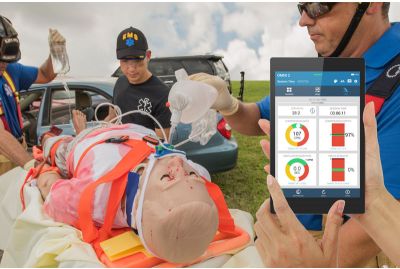 Trauma HAL® S3040.10 - Wireless and Tetherless Point-of-Injury Care Trauma Patient SimulatorS3040.10.PKLearn MoreThe Trauma HAL® with OMNI® 2 is a wireless full-body trauma patient simulator with programmable bleeding and pressure sensors. The completely tetherless design and ruggedized joints make this simulator perfect for facilitating training in care under fire, point of injury care, extraction, tactical evacuation, mass casualty, patient transport, decontamination and more.
Trauma HAL® S3040.10 - Wireless and Tetherless Point-of-Injury Care Trauma Patient SimulatorS3040.10.PKLearn MoreThe Trauma HAL® with OMNI® 2 is a wireless full-body trauma patient simulator with programmable bleeding and pressure sensors. The completely tetherless design and ruggedized joints make this simulator perfect for facilitating training in care under fire, point of injury care, extraction, tactical evacuation, mass casualty, patient transport, decontamination and more. -
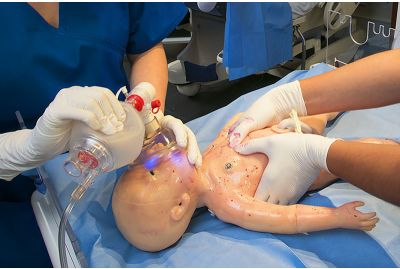 Newborn TORY® S2210 - Wireless and Tetherless Full-term Neonatal Care Patient SimulatorS2210.PKLearn More
Newborn TORY® S2210 - Wireless and Tetherless Full-term Neonatal Care Patient SimulatorS2210.PKLearn MoreNewborn TORY® offers a new level of fidelity with true-to-life physical and physiological attributes essential for effective neonatal care simulation training. With a truly wireless and tetherless design educators can freely simulate clinical cases in any setting, even in transit. Whether in a simulation center or in-situ, Tory brings neonatal simulation closer to real life than ever before.
-
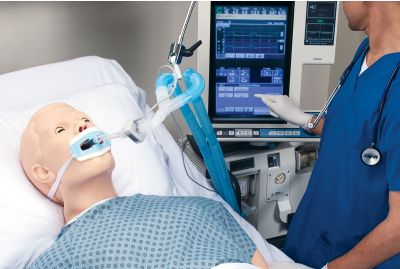 HAL® S1030 - Dynamic Airway and Lung Compliance SimulatorS1030.PKLearn MoreHAL® S1030 is a full-body, computer-controlled patient simulator designed for training respiratory care students and professionals on the treatment and management of respiratory diseases using a real mechanical ventilator. Just like a real patient, HAL® features a lifelike airway, can hold PEEP from 5 to 25 cmH2O, trigger the vent’s breath assist, change lung compliance and bilateral bronchial airway resistance, exhale real CO2, and much more. Together, these features allow educators to simulate diseases and conditions such as ARDS, COPD, and asthma, as seen in real life.
HAL® S1030 - Dynamic Airway and Lung Compliance SimulatorS1030.PKLearn MoreHAL® S1030 is a full-body, computer-controlled patient simulator designed for training respiratory care students and professionals on the treatment and management of respiratory diseases using a real mechanical ventilator. Just like a real patient, HAL® features a lifelike airway, can hold PEEP from 5 to 25 cmH2O, trigger the vent’s breath assist, change lung compliance and bilateral bronchial airway resistance, exhale real CO2, and much more. Together, these features allow educators to simulate diseases and conditions such as ARDS, COPD, and asthma, as seen in real life. -
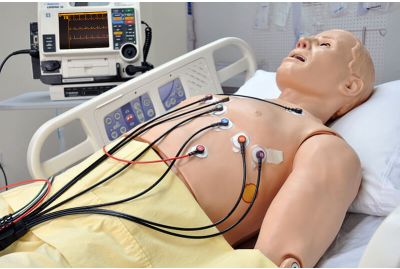 HAL® S1020 - 12-Lead ECG Skills TrainerS1020.PKLearn MoreThe HAL® S1020 is a 12-lead ECG skill trainer with an integrated myocardial infarction (MI) model to help participants improve diagnostic skills and ECG interpretation skills.
HAL® S1020 - 12-Lead ECG Skills TrainerS1020.PKLearn MoreThe HAL® S1020 is a 12-lead ECG skill trainer with an integrated myocardial infarction (MI) model to help participants improve diagnostic skills and ECG interpretation skills. -
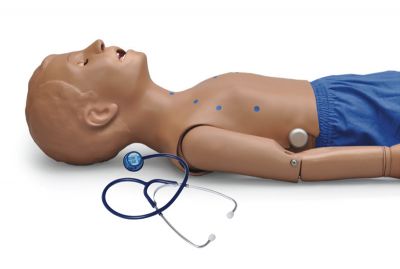 5-Year-Old Patient, Heart and Lung Sounds Skills Trainer (S314.200)S314.200.PKLearn MoreThe 5-Year-Old Patient Heart and Lung Sounds Skills Trainer is a new site-specific upgrade for your existing Gaumard® pediatric manikin. Teach site-specific heart and lung auscultation skills using seamless simulation technology. Simply press the bell against the skin and listen. Students use anatomic landmarks on the manikin to locate the site where a specific sound should be heard. If correct, they will hear the appropriate sound through the stethoscope and/or external speakers.
5-Year-Old Patient, Heart and Lung Sounds Skills Trainer (S314.200)S314.200.PKLearn MoreThe 5-Year-Old Patient Heart and Lung Sounds Skills Trainer is a new site-specific upgrade for your existing Gaumard® pediatric manikin. Teach site-specific heart and lung auscultation skills using seamless simulation technology. Simply press the bell against the skin and listen. Students use anatomic landmarks on the manikin to locate the site where a specific sound should be heard. If correct, they will hear the appropriate sound through the stethoscope and/or external speakers. -
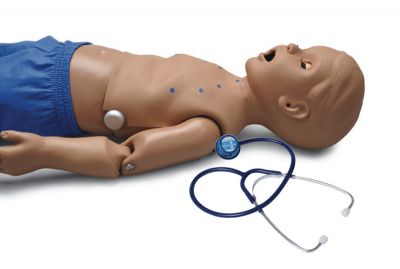 1-Year-Old Patient Heart and Lung Sounds Skills Trainer with Intubatable Airway (S312.300)S312.300.PKLearn MoreThe 1-Year-Old Patient Heart and Lung Sounds Skills Trainer with Intubatable Airway is a new site-specific upgrade for your existing Gaumard® newborn manikin. Teach site-specific heart and lung auscultation skills using seamless simulation technology. Simply press the bell against the skin and listen. Students use anatomic landmarks on the manikin to locate the site where a specific sound should be heard. If correct, they will hear the appropriate sound through the stethoscope and/or external speakers. The S312.300 can also be used to practice proper intubation.
1-Year-Old Patient Heart and Lung Sounds Skills Trainer with Intubatable Airway (S312.300)S312.300.PKLearn MoreThe 1-Year-Old Patient Heart and Lung Sounds Skills Trainer with Intubatable Airway is a new site-specific upgrade for your existing Gaumard® newborn manikin. Teach site-specific heart and lung auscultation skills using seamless simulation technology. Simply press the bell against the skin and listen. Students use anatomic landmarks on the manikin to locate the site where a specific sound should be heard. If correct, they will hear the appropriate sound through the stethoscope and/or external speakers. The S312.300 can also be used to practice proper intubation. -
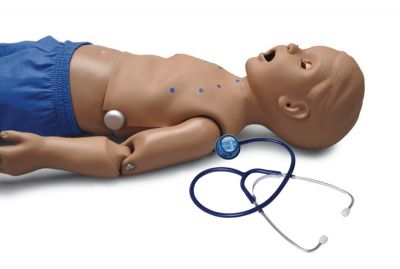 1-Year-Old Patient Heart and Lung Sounds Skills Trainer (S312.200)S312.200.PKLearn MoreThe 1-Year-Old Patient Heart and Lung Sounds Skills Trainer is a new site-specific upgrade for your existing Gaumard® newborn manikin. Teach site-specific heart and lung auscultation skills using seamless simulation technology. Simply press the bell against the skin and listen. Students use anatomic landmarks on the manikin to locate the site where a specific sound should be heard. If correct, they will hear the appropriate sound through the stethoscope and/or external speakers.
1-Year-Old Patient Heart and Lung Sounds Skills Trainer (S312.200)S312.200.PKLearn MoreThe 1-Year-Old Patient Heart and Lung Sounds Skills Trainer is a new site-specific upgrade for your existing Gaumard® newborn manikin. Teach site-specific heart and lung auscultation skills using seamless simulation technology. Simply press the bell against the skin and listen. Students use anatomic landmarks on the manikin to locate the site where a specific sound should be heard. If correct, they will hear the appropriate sound through the stethoscope and/or external speakers. -
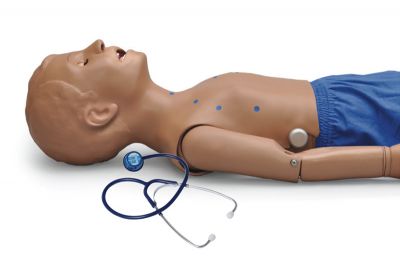 5-Year-Old Patient, Heart and Lung Sounds Skills Trainer with Intubatable Airway (S314.300)S314.300.PKLearn MoreThe 5-Year-Old Patient Heart and Lung Sounds Skills Trainer with Intubatable Airway is a new site-specific upgrade for your existing Gaumard® pediatric manikin. Teach site-specific heart and lung auscultation skills using seamless simulation technology. Simply press the bell against the skin and listen. Students use anatomic landmarks on the manikin to locate the site where a specific sound should be heard. If correct, they will hear the appropriate sound through the stethoscope and/or external speakers. The S314.300 can also be used to practice proper intubation.
5-Year-Old Patient, Heart and Lung Sounds Skills Trainer with Intubatable Airway (S314.300)S314.300.PKLearn MoreThe 5-Year-Old Patient Heart and Lung Sounds Skills Trainer with Intubatable Airway is a new site-specific upgrade for your existing Gaumard® pediatric manikin. Teach site-specific heart and lung auscultation skills using seamless simulation technology. Simply press the bell against the skin and listen. Students use anatomic landmarks on the manikin to locate the site where a specific sound should be heard. If correct, they will hear the appropriate sound through the stethoscope and/or external speakers. The S314.300 can also be used to practice proper intubation.
